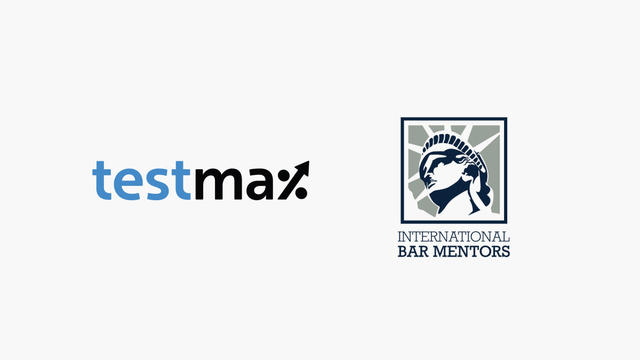Northeastern University School of Law Overview
Northeastern University Law School in Boston is part of the prestigious Northeastern University. However, it began its life in 1898 as the community-oriented Evening School of Law at the Boston YMCA, which then expanded into several sister schools in Massachusetts and Rhode Island.
Renamed Northeastern University School of Law in 1922, the school started accepting women at that time, and it watched the rest of Northeastern University grow up around it. Although shuttered in 1956, Northeastern Law reopened in 1968 with a new mission to combine theory and practice in its teaching.
Northeastern University School of Law today prides itself on being one of the most progressive and liberal campuses in the nation, boasting a strong focus on public interest law. The school has a high minority population, and The Princeton Review considers the school to be one of the best environments for minority students in the U.S. Students are encouraged to participate in the school’s social justice clinics from their first year.
The law school’s commitment to real-world work has led the National Jurist to rate it as the best practical training school in the country. The school’s revolutionary co-op program provides students with the experience of working with a real organization from the very start of their studies. Students receive one-on-one guidance from mentors during this process, allowing them to focus on learning without ever feeling lost or overwhelmed.
The curriculum at the Northeastern University Law School provides students a well-rounded education as well as plenty of preparation for real-world work. First-year students must complete a social justice project with a real client organization and take part in the school’s co-op program, which provides almost a year of full-time legal work experience.
Students also have access to traditional forms of hands-on experience, including moot court competitions, simulation courses, and clinics. The school prides itself on many student-led societies that focus on social justice, technology, and environmental law. No matter what your background, you will find a group with similar interests.
The primary student-led journal is the Northeastern University Law Review, a respected publication focusing on the practical application of the law and containing articles by established attorneys, academic scholars, and students alike.
Students at the Northeastern University of Law School may take advantage of many of Northeastern University’s modern, innovative facilities while still enjoying the collegial atmosphere of a small law school.
The law school’s location in Boston enables maintaining a work-life balance. The city is a cultural hub, with Northeastern University right at the center. Cultural attractions like the Museum of Fine Arts and Fenway Park are a short walk away. Boston is also rapidly becoming a foodie’s dream destination, with high-quality, authentic food trucks on almost every corner.
Northeastern University Law School’s location also provides students with plenty of professional opportunities. Thanks to its central location, the school has worked with the Supreme Judicial Court of Massachusetts, the Department of Justice, and numerous national law firms and businesses. Many students use their co-op experience to springboard into meaningful and profitable careers.
Northeastern University of Law School Rankings
School rankings are a good indicator of the quality of a particular law school. Rankings take into account a wide variety of factors, including the school’s resources, employment prospects, prestige, and faculty.
Rankings not only affect the price and quality of a student’s education but also affect their future career prospects. Many employers will hire only from specific law schools, so national employers often fall back on school rankings as a starting metric.
However, highly ranked schools also come with some disadvantages. First, they are often very competitive and hard to get into for prospective applicants. Also, highly desired schools tend to have significantly higher tuition fees, which may result in years of student debt.
The main law school ranking agency in the U.S. is the U.S. News and World Report. This publication evaluates all 194 law schools in the county and publishes the results annually. The Northeastern University Law School is consistently in the top 100 schools and currently ranks 82nd among all law schools. The Princeton Review recently ranked the school as the second-best school environment for minorities in the country.
Northeastern University School of Law Admissions
What is the Northeastern University School of Law Acceptance Rate?
One of the principal factors to consider when applying for a law school is its acceptance rate. The acceptance rate is a good measure of how likely the average candidate is to get into a particular school.
The two main factors that influence an acceptance rate are the number of students the school takes in and the number of applications per year. Higher-ranked schools, and those with higher prestige, tend to receive thousands, if not tens of thousands, of applications per year.
Many of these schools will only accept a few hundred applicants, while smaller schools may even limit their pool of students to 100 or less. The combination of prestige and small student body is the main reason why prominent schools like Yale and Harvard have an acceptance rate in the single digits.
Acceptance rates can vary from year to year, although most schools will remain relatively stable. These fluctuations are often due to the number of applicants in a year, and the rate can change significantly if a school expands or limits the number of incoming students.
The Northeastern University Law School is relatively competitive, with approximately 35% of applicants receiving offers to study this past year. However, this is a significant decrease from the previous year, when the school accepted 41.5% of applicants. Considering that the national average is 45%, Northeastern University Law School is still a school with stringent requirements and a relatively low acceptance rate.
When applying to a competitive school, a prospective student should have a respectable LSAT and GPA. These two numbers factor heavily in many application decisions and can significantly affect an applicant’s chances of getting into their preferred school. If you have less-than-stellar LSAT, it’s vital to provide a notable application with strong references to make your application stand out from the rest.
| Applications | Offers | Matriculated | |
| Class of 2023 | 2965 | 1030 (34.74%) | 140 (4.7%) |
| 25% | Median | 75% | |
| GPA | 3.3 | 3.55 | 3.75 |
| LSAT | 152 | 161 | 162 |
| Applications | Offers | Matriculated | |
| Class of 2022 | 41.5% | ||
| 25% | Median | 75% | |
| GPA | 3.37 | 3.60 | 3.79 |
| LSAT | 156 | 161 | 163 |
Northeastern University School of Law LSAT Percentiles
| 75th percentile | 162 |
| 50th percentile | 161 |
| 25th percentile | 152 |
2019 Entering Class Profile
| Number of Students | 455 |
| LSAT Score | 161 |
| Undergraduate GPA | 3.55 |
| % Women | 62.9% |
| % Students of Color | 6.8% |
| % Enrolled Directly After College | N/A |
What is the Tuition for Northeastern University School of Law?
| In-state Resident | Non-Resident | |
| Full-time | $46,520 | $46,520 |
| Part-time | N/A | N/A |
What are the Living Expenses at Northeastern University School of Law?
| On-Campus | $19,500 |
| Off-Campus | $19,500 |
What are the Housing Options at Northeastern University School of Law?
| On-Campus | Yes |
| Off-Campus | Yes |
Bar Passage Rates at Northeastern University School of Law
| Reporting | 80.5% |
| First-time takers | 220 |
| Northeastern University School of Law Average | 79.7% |
| State Average | 81.4% |
| National Average | 79.64% |
Application Deadlines
When will the Northeastern University School of Law application materials be available?
The Northeastern University Law School uses the Law School Admission Council (LSAC) platform for applications. This online platform is always available, so prospective students can access their application materials whenever they are ready to start the application process.
When does Northeastern University School of Law begin accepting applications?
The Northeastern University Law School has a priority deadline of March 1 but will continue to accept applications as spaces are available.
How are applications to Northeastern University School of Law submitted?
This law school, like most, uses the LSAC online system. Prospective students create an account online to which they upload and submit all their relevant documents such as transcripts, letters of recommendation, etc. They can also take the LSAT via the platform.
Does Northeastern University School of Law have an “early admission” or an “early decision” process?
Yes. The law school offers an early action deadline for prospective students who consider Northeastern University Law School their first choice. The deadline for the early decision option is December 1. Applicants admitted via this process must agree to withdraw any applications to other law schools. Applicants can expect to receive a decision in mid-February.
How much is the application fee and when is the deadline?
There is no application fee for any application.
| Application Fee | – |
| Early Decision Deadline | December 1 |
| Regular Decision Deadline | March 1 |
Does Northeastern University School of Law grant interviews?
No.
Employment and Salary Expectations After Northeastern University School of Law
| Median Salary Private Sector | $126,600 |
| Median Salary Public Sector | $58,623 |
83% of the Northeastern University Law School graduating class of 2019 was employed ten months after graduation.
The largest portion (37%) went into the private sector, while 17% went into business/industry, 14% into government, 20% into public interest, and 5% into academia. Over half the class remained in Massachusetts, while 12% moved to New York and 5% to the District of Columbia.









